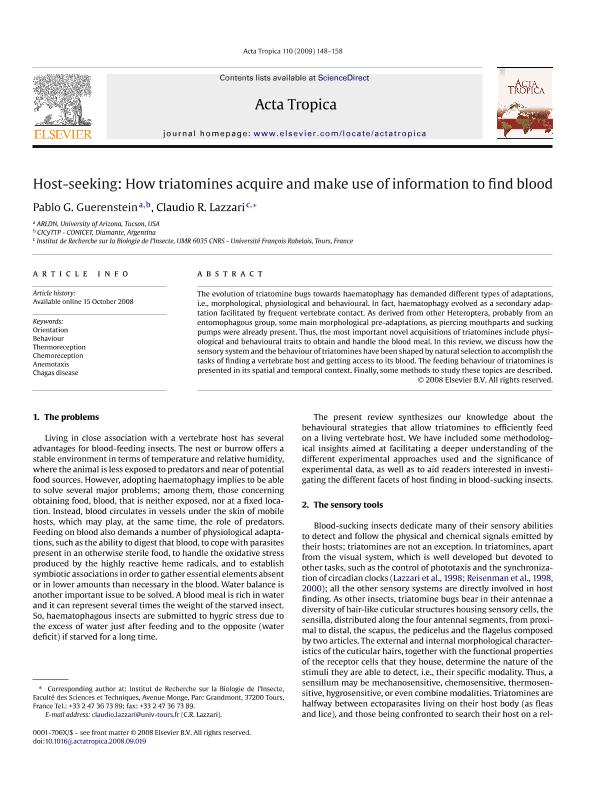Artículo
Host-seeking: How triatomines acquire and make use of information to find blood
Fecha de publicación:
05/2009
Editorial:
Elsevier Science
Revista:
Acta Tropica
ISSN:
0001-706X
Idioma:
Inglés
Tipo de recurso:
Artículo publicado
Clasificación temática:
Resumen
The evolution of triatomine bugs towards haematophagy has demanded different types of adaptations, i.e., morphological, physiological and behavioural. In fact, haematophagy evolved as a secondary adaptation facilitated by frequent vertebrate contact. As derived from other Heteroptera, probably from an entomophagous group, some main morphological pre-adaptations, as piercing mouthparts and sucking pumps were already present. Thus, the most important novel acquisitions of triatomines include physiological and behavioural traits to obtain and handle the blood meal. In this review, we discuss how the sensory system and the behaviour of triatomines have been shaped by natural selection to accomplish the tasks of finding a vertebrate host and getting access to its blood. The feeding behaviour of triatomines is presented in its spatial and temporal context. Finally, some methods to study these topics are described.
Palabras clave:
Anemotaxis
,
Behaviour
,
Chagas Disease
,
Chemoreception
,
Orientation
,
Thermoreception
Archivos asociados
Licencia
Identificadores
Colecciones
Articulos(CICYTTP)
Articulos de CENTRO DE INV.CIENT.Y TRANSFERENCIA TEC A LA PROD
Articulos de CENTRO DE INV.CIENT.Y TRANSFERENCIA TEC A LA PROD
Citación
Guerenstein, Pablo Gustavo; Lazzari, Claudio Ricardo; Host-seeking: How triatomines acquire and make use of information to find blood; Elsevier Science; Acta Tropica; 110; 2-3; 5-2009; 148-158
Compartir
Altmétricas




